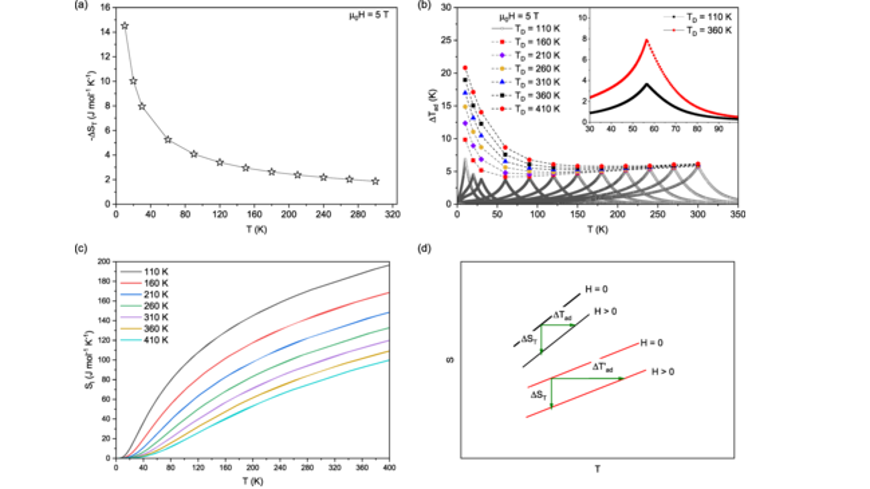Role of Debye temperature in achieving large adiabatic temperature changes at cryogenic temperatures
New publication
2024/05/03

The discovery of giant magnetic entropy change in Pr2In broke the stereotype that light rare-earth-based magnetocaloric materials show weaker magnetocaloric effects than their heavy rare-earth-based counterparts at temperature relevant for hydrogen liquefaction. However, we discovered that the adiabatic temperature change of this compound is not as impressive as its remarkable magnetic entropy change. We found that Debye temperature plays an important role in achieving large adiabatic temperatures: the larger the Debye temperature, the larger the adiabatic temperature change, particularly in the cryogenic temperature range. This explains the absence of a giant value of adiabatic temperature change in Pr2In and serve as a tool for designing or searching materials with both large magnetic entropy and adiabatic temperature changes.
This work has been published in Physical Review B as letter, which you can access via this link.
W. Liu, F. Scheibel, N. Fortunato, I. Dirba, T. Gottschall, H. Zhang, K. Skokov, O. Gutfleisch
Phys. Rev. B 109, L140407 (2024).
DOI: 10.1103/PhysRevB.109.L140407



